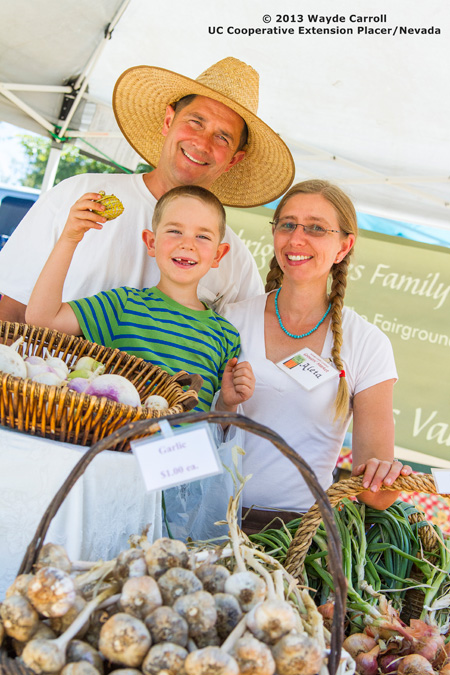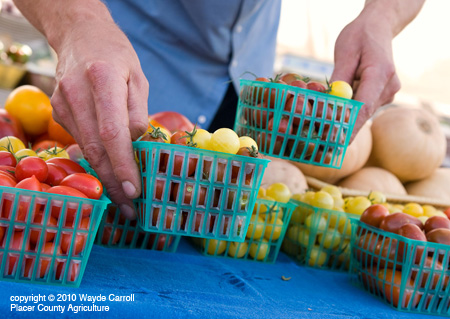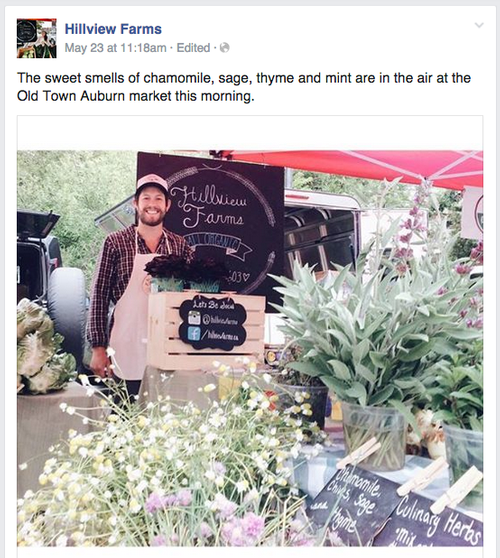Posts Tagged: website
Building a Web Presence for Your Farm Business: Part 2 — Telling Your Story

Last week, we talked about the differences between personal business websites and social media, and the importance of using both to build your web presence.
So — you've set up your Facebook account and bought your website domain name. Now, where to begin?
It can be a bit overwhelming designing a website from scratch, and you may find it easier to hire a professional or find a tech-savvy friend to help with the process. Or you can use free, open-source tools like Wordpress to set up a basic site, no programming knowledge required. But whichever way you decide to go, you'll still need to include the same key elements.
Content
This is your chance to share what you do with the world! Keep in mind that some people will go to your website looking for only the most basic information, while others will want to know all about your farm. Keep the key info front and center, but do consider including more of your story for those who are interested. A few questions to start the brainstorming process:
• Who are you, the farmer?
• What do you grow or produce? What is special about your crop(s) and your farm?
• How do you grow it? Do you use organic or sustainable practices?
• Why do you do what you do?
All this can be as brief or in-depth as you like, but it all helps to build that sense of connection between you and your customers. Include a bit about the history of your farm, your farming practices, your philosophy. And don't forget basic contact information, too — it's surprising how often people neglect to include their own names on their websites! Be sure that visitors can easily find your preferred contact info, as well as where your farm is located and where to find your products.
Once you have your content, it's time to make it look beautiful! Great photos are key to a good farm website. You might want to find a photographer friend, or consider hiring someone. (Getting quality images — especially photos of yourself that you actually like — can be easier with someone else behind the lens.) At the very least, use a good camera; cell phone snapshots just don't quite cut it! Include pictures of the farmers, the landscape, and some beautiful close-ups of your products.
When choosing photos, take a moment to put on your "consumer glasses" and try to look at them as a non-farmer. Does everything look clean, fresh, inviting? (We tend not to notice the junk piles and manure heaps, but your customers will!) Photos are a great way to give consumers a sense of connection to you and your farm, and to build your "farm story," so take the time to choose them carefully and make sure they reflect the bounty and beauty your farm has to offer.
Do you have a logo? If not, consider designing one, or choose a font or graphic to identify your “brand.” You can use this same branding across your website, social media, printed materials, packaging, even your farmer's market stand — it helps make your products visibly yours, simplifies the process of designing new elements (such as packaging or your website), and gives everything you do a coherent look and feel.
Do you like to write or photograph? If so, consider adding a blog to your site (and updating it regularly!) This is a great way to share what's happening on your farm – and an easy way to add new, current content regularly to your website. Keep it interesting, beautiful, engaging... it's not all just about promotion. Tell your story.
One more important detail: many users will be viewing your page on smartphones and other mobile devices, so be sure that your site is mobile-friendly. This ensures that your text will be readable, images viewable, and site navigable on a mobile phone or tablet. Most Web design platforms, such as Wordpress, have mobile device compatibility built in; if you work with a Web designer, check that he or she will be building a mobile-friendly site. You can use Google's Mobile-Friendly Test tool to check a site for compatibility.
In Part 3, we'll take a look at adding social media to further build connection with your customers, as well as some further resources and great local farm websites for inspiration!

Previous posts in this series:
Building a Web Presence for Your Farm Business: Part 1 — Websites versus Social Media
Building a Web Presence for Your Farm Business: Part 3 — Let's Get Social!
Building a Web Presence for Your Farm Business: Part 1 — Websites versus Social Media
Most of us don't choose a life in farming because we love sitting at a desk in front of a computer, or because we'd rather be indoors checking email or analyzing Web traffic statistics. But it's a fact of 21st century (business) life: sooner or later, you'll have to get online! Good marketing is key to a successful farm business, and it's now easier than ever to connect with consumers via the Web and social media.
“But my customers already know me”, you say! “My farmer's market stand is head turningly gorgeous, and I'm on first-name basis with the people who buy what I produce. Why do I need a Web presence?”
The short answer: it's your business card, and it's your story. A website gives you credibility, visibility, a way for people to find you — and a way for you to share who you are and what you do with your customers, and with the world.
First of all: what is a “Web presence,” anyway?
It can (and should) include both a website and social media (Facebook, Twitter, etc.). Your website gives you credibility, visibility, and search engine rankings — think of it as your storefront. Social media adds interaction, personality, and fun.
Wait, I have a Facebook page — isn't that enough?
Facebook is great for connecting with your customers, but it isn't a replacement for a website! It may be tempting to use “free,” quick-and-easy social media sites instead of investing time (and possibly money) in building a custom website, but as we all know, you do get what you pay for. Social sites are generally template-based, generic, and limited in flexibility; they give users very little control or ownership of their content. And — though it may be hard to believe — not everyone is on Facebook! Limiting your Web presence to social-media sources can actually limit your reach to potential customers.
However, social media does have its advantages. Customers have to make the effort to go find and visit your website, whereas Facebook, Twitter, and the like are more integrated into the daily “stream of consciousness” — your followers will see your updates without actually having to go out of their way to look, and in “real time,” as you post them. This is especially great for announcing market days, specials, and things happening right now. Just picked the first peaches of the season? Make sure your customers are the first to know, and include your favorite peach ice cream recipe! Got a truckload of kale you've just harvested? Post a photo announcing your two-for-one deal at the farmer's market today!
By contrast, a personal website gives you a “permanent” home on the Web. You own it, it will act as a hub for all the aspects of your Web presence (blog, social sites, etc.), and you have full control over the content and design. Next week, we'll talk about how to tell your story with great content, beautiful photos, and engaging social media. Stay tuned!
Continue reading:


